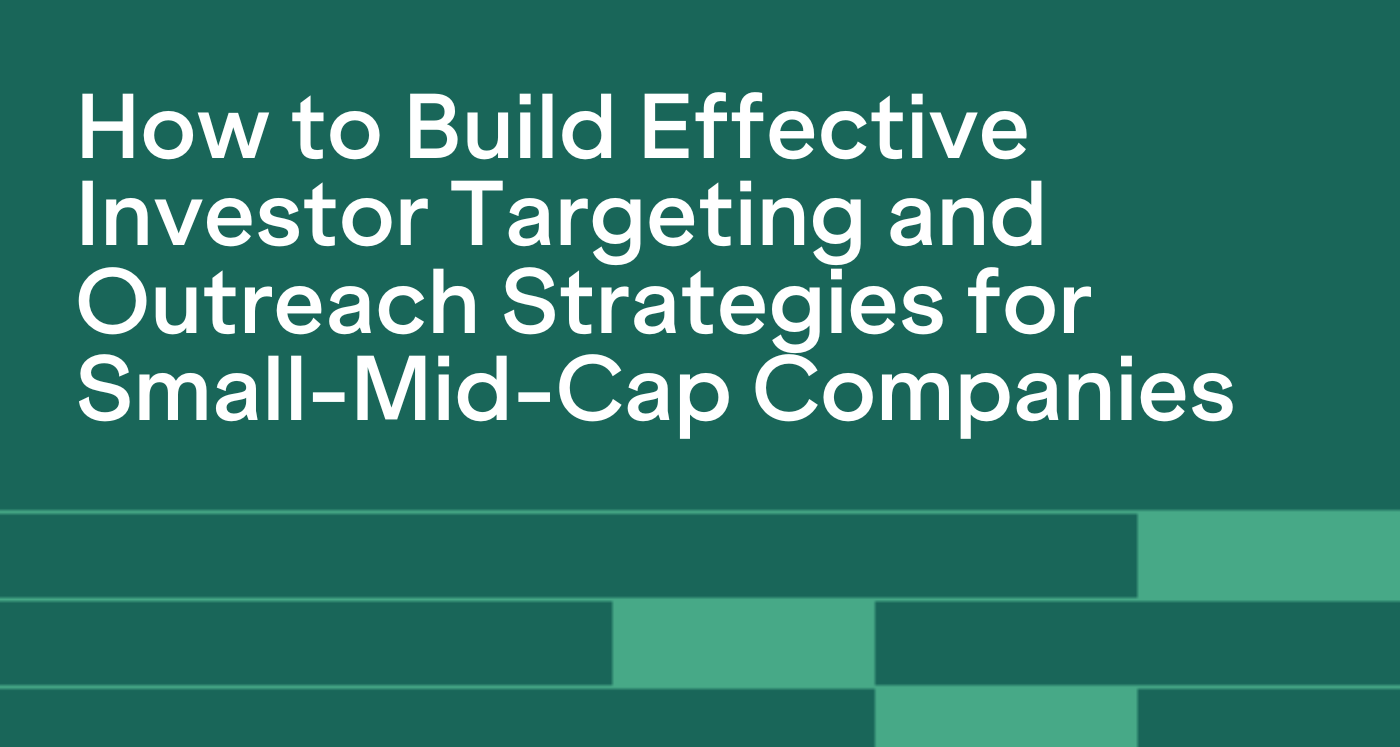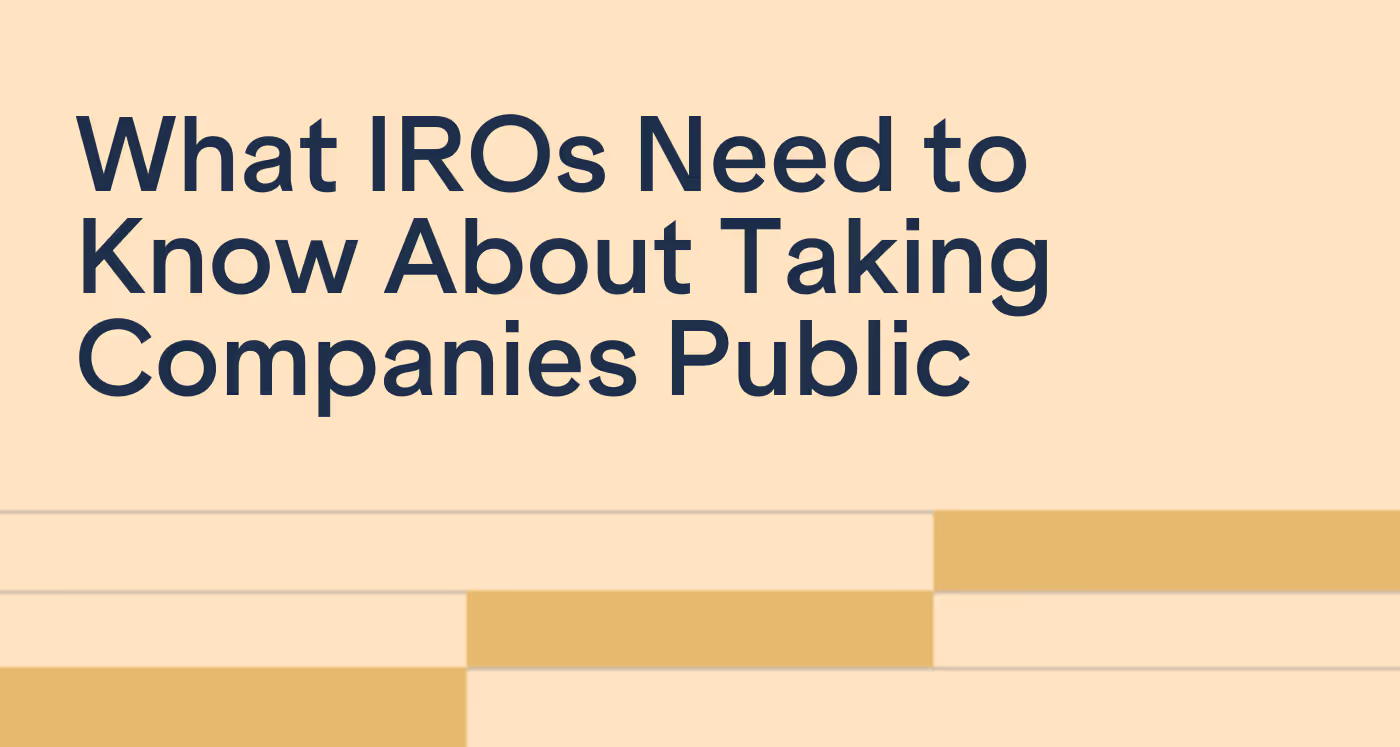
How to Build Effective Investor Targeting and Outreach Strategies for Small-Mid-Cap Companies
Learn how seasoned IR veterans are executing targeting strategies for small-mid-cap companies.
.avif)
Attendance is a key metric for the success of any event, but your focus shouldn’t only be on the number of attendees. Planning an impactful Investor Day means ensuring the right audience is in attendance. You want to attract investors who are genuinely interested and aligned with your company's strategic objectives. Every step in your guest list planning process should ladder back to these goals.
Our Managing Director, EMEA, Michael Roper, recently shared his best practices at a live event hosted by Lumi and the Middle East Investor Relations Association (MEIRA). Building on his insights, this post provides practical tips to help you identify and target the right investors—ensuring your next Investor Day is a success.
To build your ideal list, start by analyzing your current shareholder data. This includes understanding the types of investors, their investment styles, and their engagement levels. Here’s how to approach it:
.avif)
Build your target list of new investors to reflect your company’s strategic objectives. Whether it's entering new markets, launching innovative products, or enhancing sustainability initiatives, these goals should guide your targeting efforts.
For example, imagine one of your goals is to diversify your investor base. You might want to seek investors with various investment strategies, such as value, growth, thematic investing, and varying risk tolerance levels. Another idea is to target those aiming to diversify their portfolios by entering new industries or geographies.
Using a database and CRM like Irwin, you can analyze investment strategies and identify gaps and opportunities.
See Also: The Ultimate Guide to Investor Targeting
Working with IR consultants and investment banks can broaden your reach. These experts have extensive networks and can provide introductions to new investors who match your strategic goals. Similarly, engaging industry analysts who cover your sector for recommendations can attract new investors who rely on their expertise.
Consider alternative data sources, such as intent data, which tracks website traffic to your IR site. Identifying organizations that frequently visit your site can pinpoint potential new investors or current shareholders actively seeking information about your company.
Another way to analyze intent data is to collaborate with your marketing or communications team to track engagement metrics from online platforms.
For example, they might monitor relevant subreddits. Engagement in threads about your company, such as comments, upvotes, and discussions, can provide insights into investor sentiment and interest. If an investor frequently participates in conversations about your company or industry, this could indicate potential interest in attending your event.
Peer benchmarking helps identify investors interested in your peers and competitors. You can review your competitors' public filings, shareholder ownership, and investor presentations to see which investors are actively engaged with similar companies.
Staying informed about broader market trends using platforms like FactSet Workstation helps identify targets interested in current themes. For example:
Learn more about Irwin’s FactSet Integration
Leverage AI tools to process large volumes of historical, unstructured data. For example, Irwin Assistant Summaries analyzes past investor interactions, providing valuable insights into sentiment, trends, concerns, and recurring themes. AI can help pinpoint highly engaged shareholders and potential new investors, ensuring targeted and effective outreach.
Staying on top of technology is essential when curating your invite list for your Investor Day. Data-driven solutions like CRM and AI help you accurately identify and target the right investors. These technologies allow you to analyze past interactions, understand investor interests, and align your outreach with your company's goals. By leveraging technology, you can ensure you have the right audience at your next Investor Day and ultimately build stronger connections.
Learn how Irwin helps IR teams efficiently target right-fit investors

Learn how seasoned IR veterans are executing targeting strategies for small-mid-cap companies.

Elizabeth Librizzi breaks down the secrets of buy-side corporate access to help investor relations professionals utilize buy-side firms.

What IROs Need to Know About Taking Companies Public: Insights from award winning investor relations thought leader Catherine Buan.